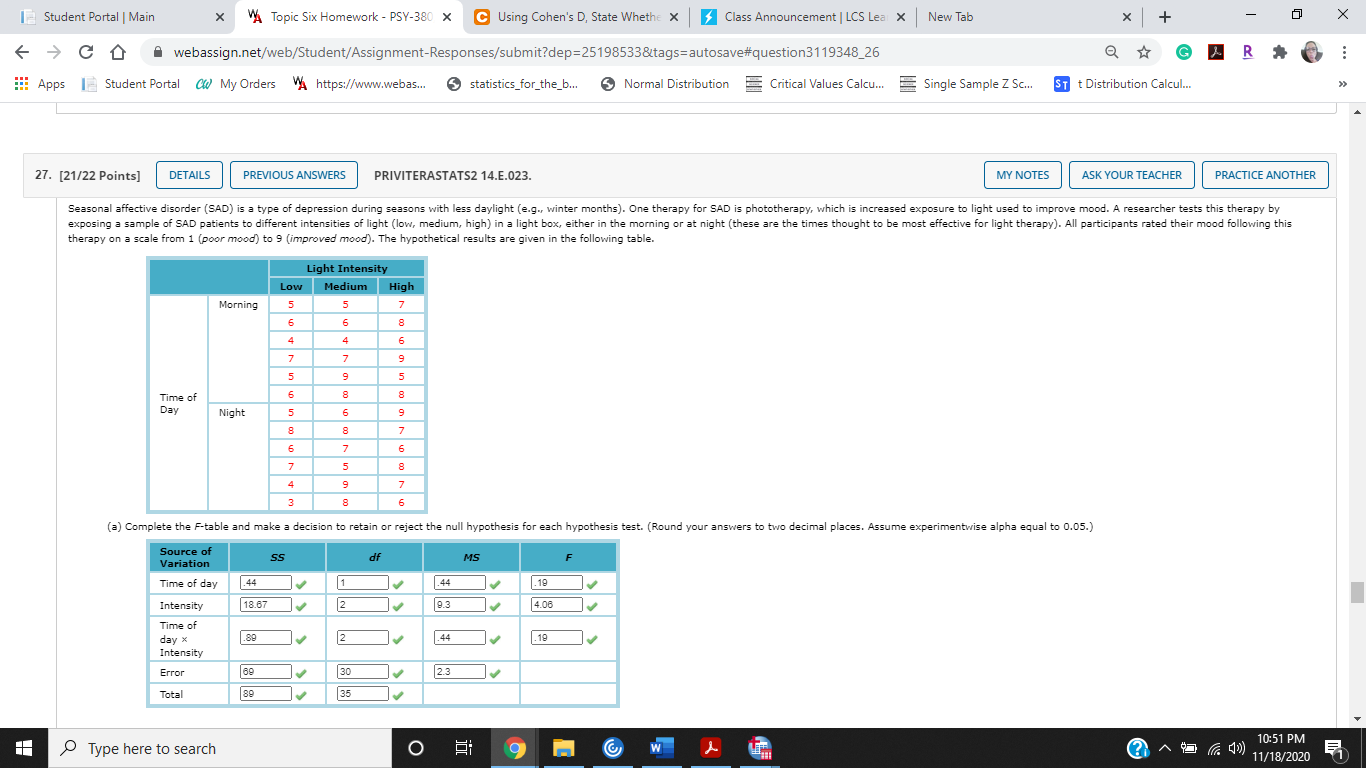Question
I figured out everything but need help with summarizing Tukey's HSD Results at the end. Seasonal affective disorder (SAD) is a type of depression during
I figured out everything but need help with summarizing Tukey's HSD Results at the end.
Seasonal affective disorder (SAD) is a type of depression during seasons with less daylight (e.g., winter months). One therapy for SAD is phototherapy, which is increased exposure to light used to improve mood. A researcher tests this therapy by exposing a sample of SAD patients to different intensities of light (low, medium, high) in a light box, either in the morning or at night (these are the times thought to be most effective for light therapy). All participants rated their mood following this therapy on a scale from 1 (poor mood) to 9 (improved mood). The hypothetical results are given in the following table.

Step by Step Solution
There are 3 Steps involved in it
Step: 1

Get Instant Access to Expert-Tailored Solutions
See step-by-step solutions with expert insights and AI powered tools for academic success
Step: 2

Step: 3

Ace Your Homework with AI
Get the answers you need in no time with our AI-driven, step-by-step assistance
Get Started


